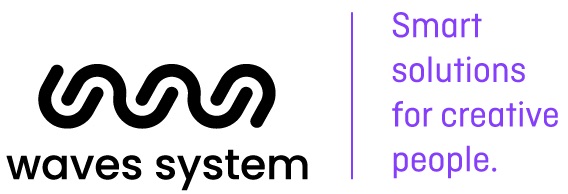Essential features of your video projector
Brightness and resolution are the first criteria to consider when making your choice.
Brightness (lumens)
The brightness of a video projector, measured in ANSI lumens, is an essential criterion. The larger the surface to be projected or the more exposed it is to ambient light, the more powerful the projector needs to be.
For example, a mapping on the façade of a cathedral requires at least 20,000 lumens, while an indoor installation can be satisfied with 5,000 lumens.
Precise calculation of lumen requirements for each project
To determine your precise requirements, use this simplified formula:
Lumens required = Projection area (m²) × Ambient lighting factor × Area factor
Where
- Ambient light factor: 500 (dark room), 1000 (controlled lighting), 2500+ (strong ambient light)
- Surface factor: 1 (white), 1.5 (light colour), 2+ (dark colour)
You can also use the manufacturers’ online help to make these calculations more accurately.
Here is a list of the brands we recommend for professional use:
Indoor video mapping (3,000 to 10,000 lumens)
For well-controlled indoor environments:
- 3,000 -5,000 lumens: Sufficient for small installations in dark spaces (art galleries, small rooms)
- 5,000 – 8,000 lumens: Suitable for medium-sized areas (up to 30m²) in spaces with controlled lighting
- 8,000 – 10,000 lumens : Recommended for corporate or museum events with moderate ambient light
For mapping on dark or absorbent materials, increase these values by at least 30%.
Outdoor video mapping (10,000 to 75,000 lumens)
Outdoor projections require considerably more power:
- 10,000 – 20,000 lumens: Minimum for night-time projections on limited surfaces (façades of small buildings)
- 20,000 – 40,000 lumens: Standard for professional night-time architectural mapping
- 40,000 – 75,000+ lumens: Necessary for large events or projections with residual light (twilight, urban lighting).
Pour les mappings monumentaux, il est souvent préférable d’utiliser plusieurs projecteurs synchronisés plutôt qu’un seul très puissant. Vous retrouverez de la redondance et de la flexibilité.
Ambient light compensation
Ambient light is enemy number 1 in video mapping.
Here are a few ideas on how to get a decent result despite this light:
- Favour evening hours for outdoor projections
- Negotiate the temporary switching off of surrounding lighting
- Use high-gain screens whenever possible
- Install light barriers or blackout structures
- For daytime projections, massive luminosity (50,000+ lumens) is essential.
Resolution and image quality
Resolution influences the sharpness of the projected content. For accurate rendering over a large surface, choose WUXGA (1920×1200) or 4K, which avoid the pixelation effect.
Resolutions available on the professional market
Current standards for professional video mapping include :
- WUXGA (1920×1200): Minimum resolution for current professional projects
- Full HD (1920×1080): Current standard, compatible with most sources
- WQXGA (2560×1600): Intermediate resolution offering greater detail
- 4K UHD (3840×2160): High resolution for premium projects requiring great finesse
For very large installations, 8K projectors are beginning to appear on the market, albeit at prices that are still prohibitive for most projects.
Matching resolution to projection distance
Resolution should be chosen according to viewing distance:
- For an immersive experience where the audience is close (< 5m), go for 4K.
- For medium distances (5-15m), Full HD is still satisfactory
- For architectural projections viewed from a distance, the perceived pixel density decreases, sometimes making WUXGA sufficient.
Calculate the resulting pixel density (pixels per inch) to assess perceived sharpness at different distances.
Impact of resolution on final rendering
Beyond the figures, consider these practical aspects:
- Higher resolution means finer detail and legible text
- The source content must match the projector’s native resolution for optimum rendering.
- For irregular surfaces, a higher resolution improves mapping accuracy
- Resolution has a direct influence on file size and the computing power required
Projection ratio and positioning
The projection ratio determines the size of the image obtained as a function of the distance from the projector to the surface.
Projection ratio formula and practical calculations
The projection ratio is calculated as follows :
Projection ratio = Projection distance / Image width
For example, a projector with a ratio of 1.5:1 placed 6 metres away will produce an image 4 metres wide.
For complex installations, use this inverse formula to determine the optimum placement:
Projection distance = Projection ratio × Desired image width
Professional projectors generally indicate a range of ratios, for example ‘1.2-1.8:1’, indicating the possibilities for adjustment via the zoom.
Types of lenses available and their use
The professional market offers different categories of lenses:
- Ultra short throw (< 0.5:1): Enables projection to within a few centimetres of the surface
- Short focal length (0.5-1:1): Ideal for restricted spaces and close frontal projections
- Standard focal length (1.5-2.5:1): Versatile for most conventional installations
- Long focal length (2.5-4:1): For remote projections, minimising obstacles between projector and surface
- Ultra long throw (> 4:1): For very long distances, such as projections from opposing buildings
For professional projectors, lenses can be interchangeable, offering greater flexibility.
Advantages of motorised zoom lenses for permanent installations
- Precise remote adjustment via control systems
- Presets can be programed for different configurations
- Flexibility to change projection without physical intervention on the equipment
- Ability to integrate with home automation systems
- Greater stability for permanent installations
For permanent architectural mappings, this functionality becomes almost mandatory.
